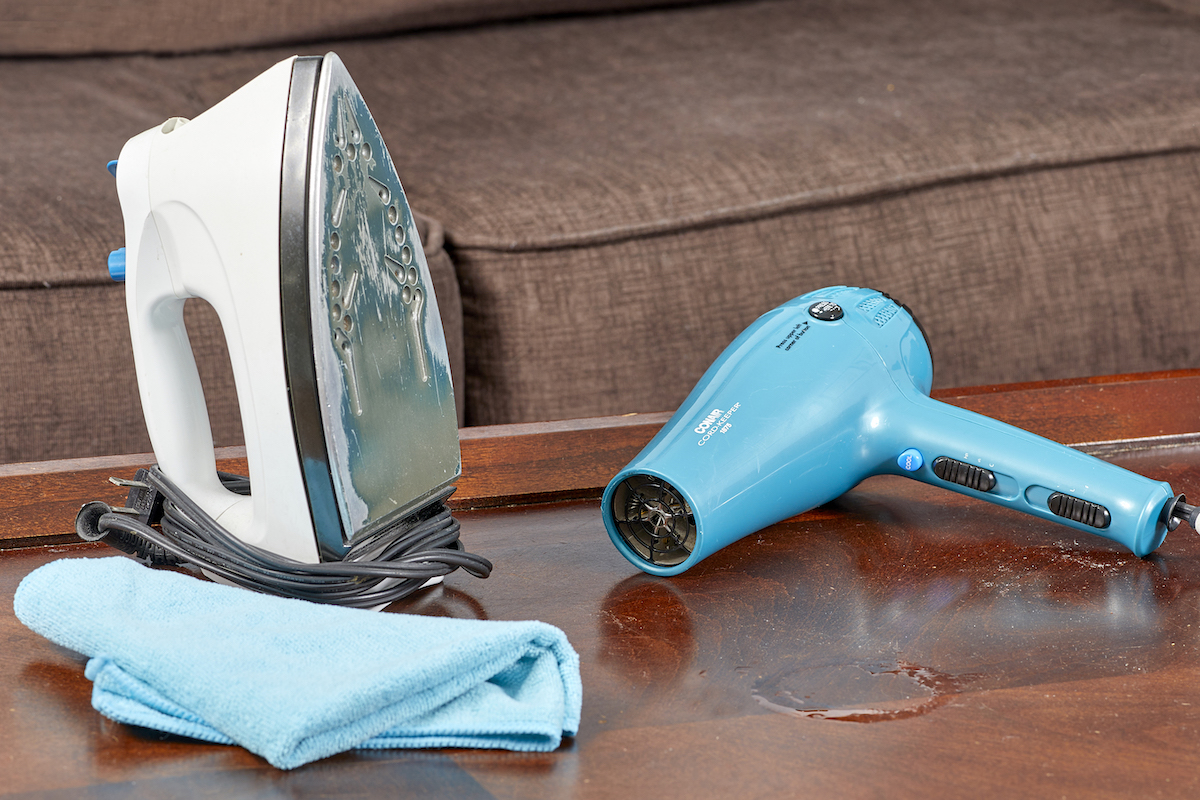

We may earn revenue from the products available on this page and participate in affiliate programs. Learn More ›
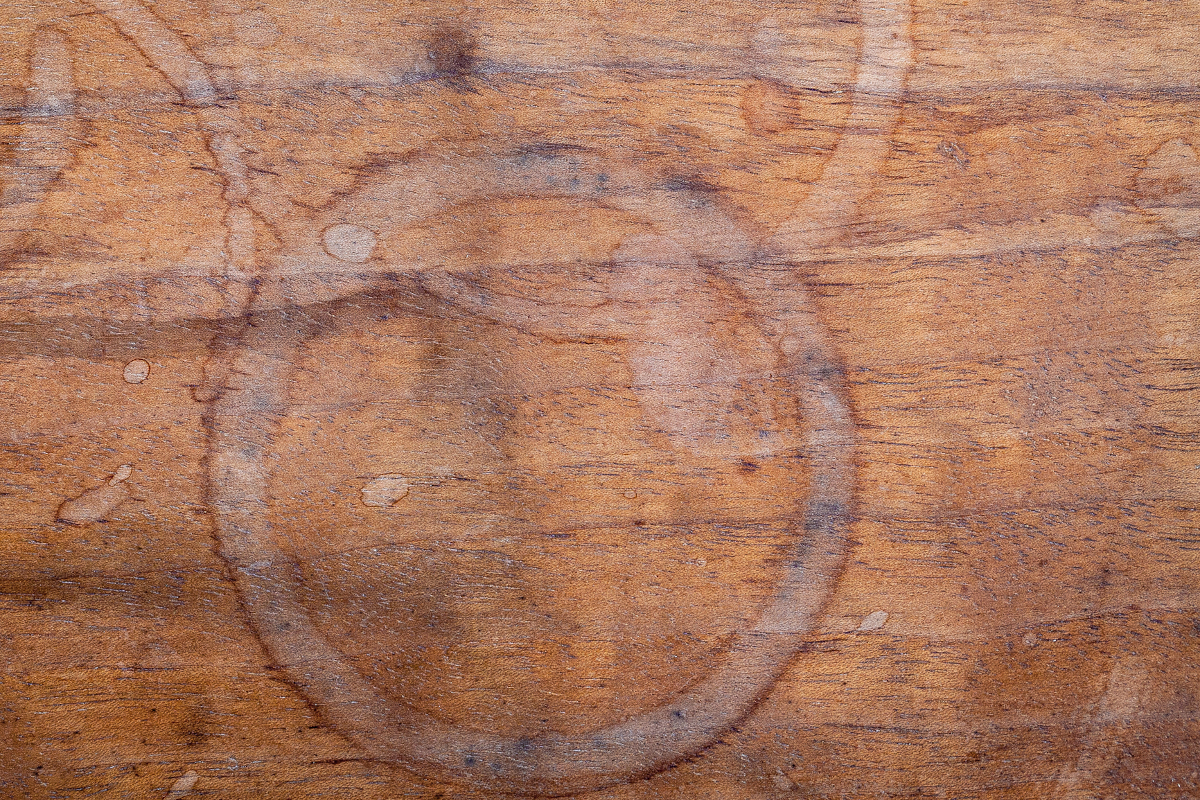
Heat stains are an enduring concern for both seasoned homeowners and those who have just made their first furniture purchases. Heat stains, unfortunately, are easy to get, especially for home chefs who regularly bring sizzling plates from the grill straight to the table. Heat stains won’t go away on their own, but these pesky blemishes aren’t difficult to remove from wood with the right techniques and tools.
However, the fear of making heat stains worse can be compounded by the sheer volume of online information on the topic. We’ve done the research on how to remove heat stains from wood, so woodworkers and DIYers of all skill levels can hit the ground running and begin mending those irksome imperfections.
What causes heat stains on wood?

Heat stains form when a hot object is placed on a wooden surface, causing the wood to expand and absorb moisture. This moisture then penetrates the wood and leaves a trail of discoloration and stark white heat marks, which remain after the hot object is removed or cools and the wood’s pores reseal.
Unfortunately, even sealed wood is susceptible to heat stains. In some cases, such as with oily pizza boxes, items that create heat stains don’t have to be all that hot; liquids like oil more easily penetrate wood. It’s best to assume that anything warm placed on a wood surface can create a heat stain, especially since different types of wood have different levels of durability.
Tools & Materials
Bobvila.com may earn a commission from purchases made through these links.
Project Overview
Working time: 5 to 10 minutes
Total time: 10 to 15 minutes
Skill level: Beginner
Estimated cost: $0 to $45
Before You Begin
If your heat stains are stubborn and a hair dryer doesn’t remove them, they may require the use of a clothes iron (see Step 4). Beforehand, make sure that the iron is not set to the steam function. Injecting steam directly into the wood is almost guaranteed to create even worse heat stains.
The Best Way to Get Heat Stains Out of Wood
Regardless of what heat stain removal method you use, acting quickly is critical to achieving an ideal result. Heat stains are similar to water stains in that they don’t clear up on their own overtime; in fact, the longer you wait, the tougher they become to remove.
Ironically, with a little bit of added heat, you can reduce the size of—or completely eliminate—wood stains on your wood furniture. It may seem counterintuitive, but applying more heat in an effort to extract the trapped moisture is actually quite effective and can be done with common household tools, such as a hair dryer or clothes iron.
Step 1: Clean the wood surface.

To get a heat stain out of wood furniture, you have start with a clean surface. Make sure that your table or other stained wooden surface is clean and free of dust and debris. This will prevent further contaminants from getting trapped inside of the wood’s open pores during the heating process.
Step 2: Turn on the hair dryer and select the lowest heat setting.

Using a hair dryer should be your first line of attack for removing heat stains; it won’t get quite as hot as a clothes iron and is less likely to accidentally burn the wood. Plug in the hair dryer and turn it on to its lowest heat setting. Make sure that you don’t set your hair dryer to cool; the pores of the wood won’t open unless they’re heated.
Step 3: Evenly pan the hair dryer across the stain.

Hold the hair dryer a few inches away from the stained surface and slowly move it from side to side over the heat stain. If the stain isn’t too deep, you will start to see it become less visible within a minute or two of heat application.
If you don’t notice a change after a few minutes of heating the wood, try raising the heat level on your hair dryer one or two levels. Continue to move the hair dryer across the stained surface for a few more minutes. If the heat stain remains unchanged in appearance, move on to the clothes iron removal method below.
Step 4: Set up your clothes iron and grab a clean towel.
If the hair dryer doesn’t work, try removing the heat stain with a clothes iron. You’ll also need a dry towel that you can place in between the ironing plate and the stained surface. The towel will prevent the iron from scorching the wood, but it needs to be thin enough to allow most of the iron’s heat to pass through to the wooden surface.
Step 5: Run the iron across the stained surface.

Turn on the iron to one of its lower heat settings and let it heat up, but do not use any steam settings or functionality. Similar to moving the hair dryer in a side-to-side motion across the stained surface, run the warm iron over the surface in the same motion for several minutes. Using an iron to remove heat stains takes a bit more time than the hair dryer method, and you have to pause every now and then to lift the towel and check your progress.
Repeat this process until you start to see the white heat marks receding. They may not completely disappear, but they should shrink or fade to some noticeable extent.
Other Ways to Remove Heat Stains on Wood
While applying heat is usually the fastest and easiest method, there are a number of lesser-known but useful methods that remove heat stains from wood furniture. Some of these are a bit off the beaten path, but they pose little to no risk to your furniture and may be worth trying if heat doesn’t work. However, always attempt any new method on an inconspicuous spot on the stained furniture before proceeding.
Toothpaste

Toothpaste can clean more than just teeth. Thanks to its alkaline properties, it can work like laundry detergent to slowly lift a stain from the depths of wood’s pores to the surface. However, this method only works with traditional plain white toothpaste; anything containing gels or artificial coloring won’t work.
Once you have your regular toothpaste, grab a bowl and make a mixture that’s one part toothpaste and two parts baking soda. After a minute or two of mixing, it should become a thick paste. Apply this paste to the heat stains and white marks. Let it sit for a minute or so before wiping it off. Repeat this process until you’re satisfied with the results.
Mayonnaise
Yes, you read that right. Mayonnaise is a tested method for removing heat stains from wood furniture. Mayonnaise is packed with dense, natural oils that penetrate the pores of wood to free the moisture trapped inside.
Similar to how you would apply a mixture of toothpaste and baking soda, simply lather some mayonnaise onto a smooth cloth and generously wipe it onto the stain. Unlike the toothpaste method, we recommend that you leave mayonnaise on the heat stain for at least a few hours or even overnight. Once it’s set, wipe off the excess and buff out the remainder of the stain.
Petroleum Jelly
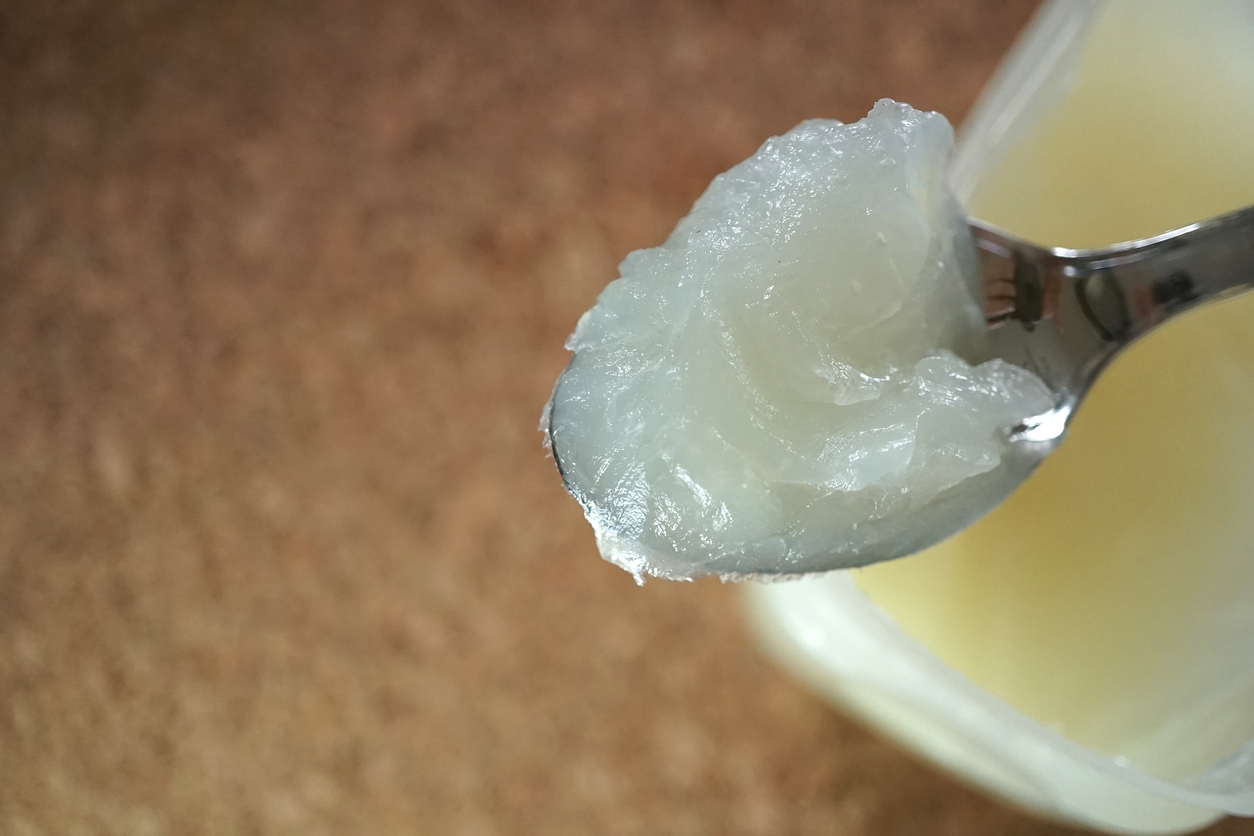
Petroleum jelly works for the same reason that mayonnaise does; its oil content. You can use petroleum jelly instead of mayonnaise if you have it on hand. All you need to do is wipe a layer of the jelly onto the stained surface with a clean rag. Let it set for a few hours before coming back to clean and buff the area.
Vinegar and Olive Oil
A vinegar and olive oil mixture is a powerful, penetrating agent with natural stain-fighting properties. Vinegar is a popular stain remover for clothing, but it can also be useful as a wood heat stain remover.
Just mix equal parts olive oil and vinegar in a container and use a paint brush or clean rag to apply it to the surface of the wood. Don’t use too much, and let it sit for about an hour before coming back to check on its progress. After wiping off the surface, dry and polish the wood.
Salt and Olive Oil
Using an olive oil and salt combination for heat stain removal is essentially the same as using a more concentrated version of mayonnaise. The oil penetrates the wood and opens the pores, while the salt dries them out, lowering the overall moisture content of the wood and reducing the discoloration caused by heat stains.
Any type of olive or vegetable oil can be used for this method. Mix the oil and salt into a viscous paste and apply it to the stain. Let it sit on the stain for an hour, and then wipe off the excess. Repeat as necessary.
Sanding
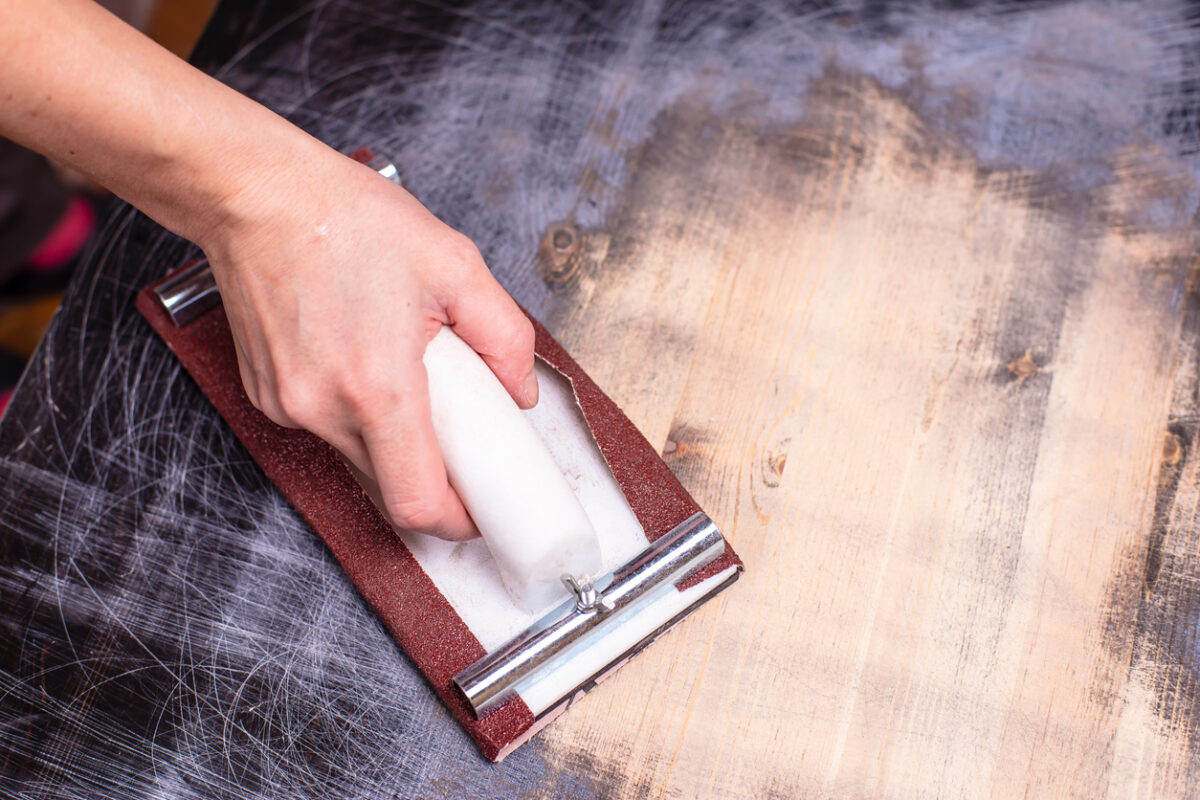
While sanding wood furniture is a highly effective method for removing heat stains, it should be a last resort because it is the most time-consuming, requires the most skill, and poses the greatest risk to your furniture if you make a mistake. Unlike when finishing a piece of furniture, you should not use a powerful circular sander for this because the abrasive pads can damage portions of the finish that aren’t stained.
Use a handheld sanding block to gently grind the stain down. Once you can’t see the stain anymore, remove as much dust as you can and reapply the finish so it matches the rest of the piece.
How to Prevent Heat Stains on Wood
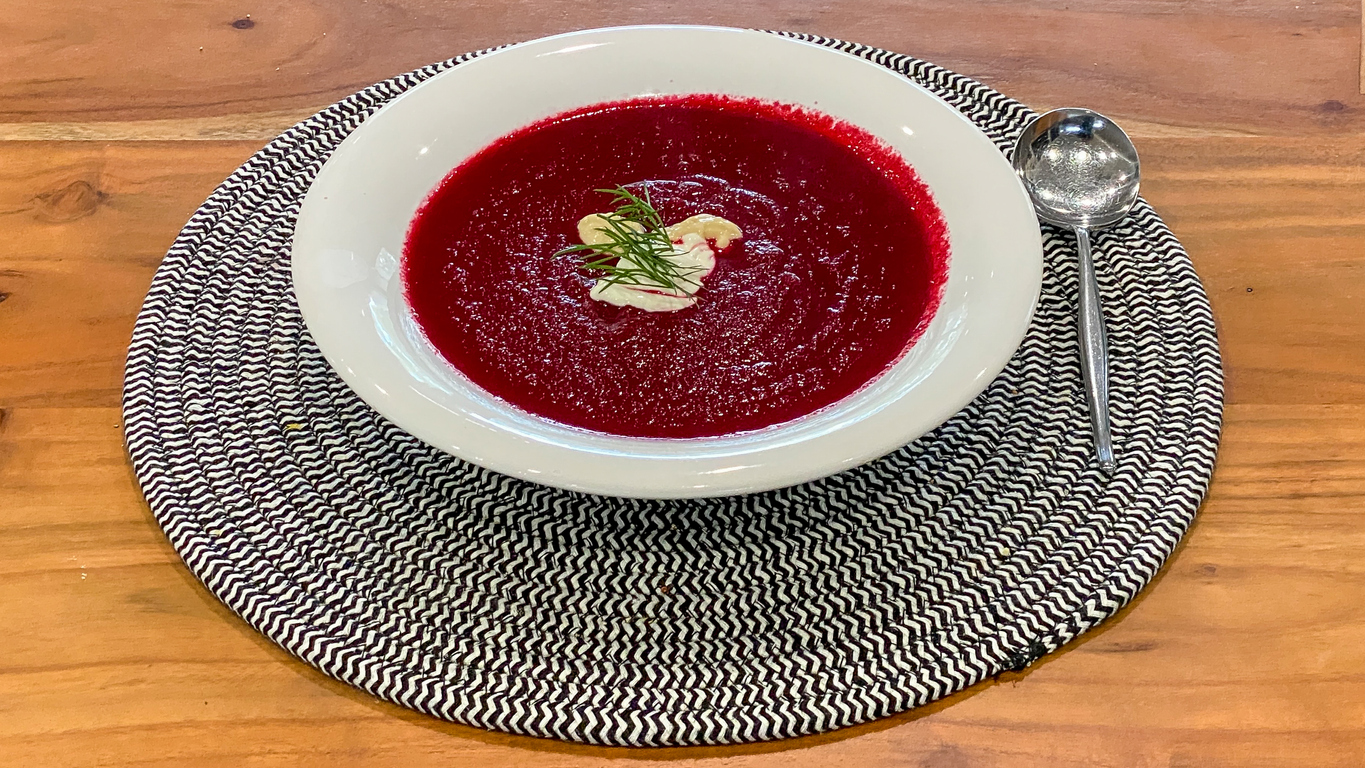
There are numerous ways to prevent heat stains, and since removing stains takes time, prevention is worth the investment. Use practical items such as coasters for mugs, trivets for pots and pans, and placemats for general use will help you proactively fight heat stains. These home decor accessories also give you a chance to add some extra style to your wood furniture. In a pinch, you can even place a potholder or oven mitt underneath hot items on wood surfaces, as well.
Final Thoughts
Removing heat stains from wood isn’t difficult, and it’s a good skill to have on hand. Furniture is costly, and although it’s designed to be used all the time, even the highest quality pieces are susceptible to a well-intentioned guest’s piping hot coffee mug or an overzealous sous-chef’s sizzling skillet. Being able to remove heat stains from wood as soon as they appear will save you time and money in the long run.
Using a bit of heat is the easiest, cheapest, and most effective way to remove heat stains from wood furniture. It’s recommended to always use this method before considering one of the above alternative techniques to finish the job.
